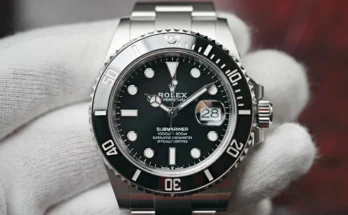Athletic shoes were first developed by the Liverpool Rubber Company in the 1830s. Initially made with canvas uppers and rubber soles, these ‘sandshoes’ have evolved into the athletic footwear we know today.
Thanks to their comfort and design, athletic shoes have become more popular than ever. Let’s take a look at what the future holds for this industry.
1. Revenues Will Continue to Increase
According to Statista, the worldwide revenue for athletic shoes in 2023 will be $52.98 billion. It continued to increase, with 2020 and 2021 sales registering at $45.30 billion and $46.13 billion, respectively. These are good sales figures, considering that the Covid-19 pandemic rocked all world economies during the said years.
The revenues for the next few years are expected to climb, as well. As per Statista, the gains for 2024 are expected to hit $55.32 billion. The forecast for 2025 sales, meanwhile, is at $57.60 billion. The per capita sales for athletic shoes, of course, will continue to increase, too. From $6.90 in 2023, the figure is expected to reach $7.14 in 2024 and $7.37 in 2025.
The ever-increasing revenues are attributed to several factors. For one, athletic shoes promise both comfort and style. There’s also the athleisure fashion trend, which has inspired many people to incorporate athletic shoes into their daily styles.
Many customers are also opting to live healthier lifestyles that athletic footwear can easily support.
2. Compound Annual Growth Rate Will Remain High
The athletic shoe market is expected to enjoy a compound annual growth rate (CAGR) of 4.15%. This is markedly higher than that of the global footwear market, which is poised to have a CAGR of 3.47%. It also exceeds the forecasted CAGR for leather footwear at 2.35%.
The only footwear industry that will surpass athletic shoes is that of sneakers, which is expected to register a whopping 5.31% CAGR.

Source: unsplash.com
3. In-Store Sales Will Continue to Yield More Profits
Most of the athletic footwear revenues will still come from offline sales. However, online sales are expected to take over in the years to come.
In 2023, 35.7% of industry sales came from E-Commerce purchases. This figure is projected to rise to 40.6% in the year 2027. Online sales are more common in developed countries, such as the US, UK, and Japan. That said, developing nations are expected to follow suit, many thanks to the digital platforms that make entrepreneurs’ lives easier.
4. North America Will Continue to Hold the Biggest Market Share
In 2019, North America was the top regional consumer of athletic footwear at 32.6%. This trend is expected to continue, experts surmise. The United States continues to be the leader in revenue generation for athletic shoes. This 2023, the figure is expected to hit US$14,900.00m. The high demand for activewear and athletic shoes is attributed to Americans’ passion for sports and adventurous activities, such as running, hiking, etc.
The Asia-Pacific region, which enjoys higher disposable income levels, is now the second-best market for the athletic footwear industry.
5. The Male Segment Will Still Dominate the Market
According to Fortune Business Insights, men will continue to hold more than 50% of the market shares. This is linked with men’s inclination towards sports and adventure.
That said, the female population is expected to be one of the industry’s fastest-growing segments. This reflects the increasing participation of females in athletic competitions, as well as various government’s efforts to facilitate women’s involvement in fitness and sport activities.
6. The Trekking & Hiking Shoe Segment Will Grow the Fastest
The athletic footwear covers five segments, namely running shoes, walking shoes, aerobic shoes, sports shoes, and trekking/hiking shoes.
For the longest time, running shoes have dominated the league of their availability and various price points. But for the years to come (2020-2030), the trekking/hiking shoes segment is expected to register the highest CAGR, according to Market Watch.

Source: unsplash.com
7. Demand For Sustainable Athletic Shoes Will Continue to Rise
According to Zion Market Research, the sustainable footwear market is expected to jump to $11.89 billion in 2028 from $7.40 billion in 2020. Nowadays, clients are getting more and more conscious of a company’s environmental footprint. As such, many are seeking more ‘green’ options for sports shoes.
Adidas is one of the businesses that succeeded in appealing to this market. Presently, it manufactures shoes with the use of recyclable materials. Sustainability, however, goes beyond the use of eco-friendly shoe materials. This also covers the entire process, from packaging to transportation and distribution. A good example is Reebok, which now uses plant-based components instead of petroleum-based materials.
Indeed, the outlook on the athletic footwear industry is brighter than ever. Demand and revenues will continue to rise in the years to come, many thanks to the stylish comfort associated with such shoes.




